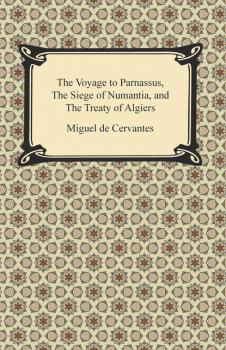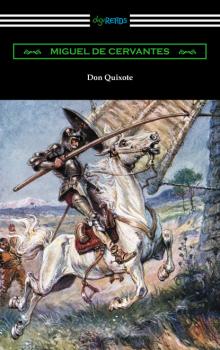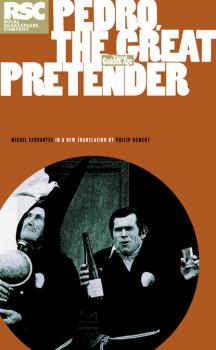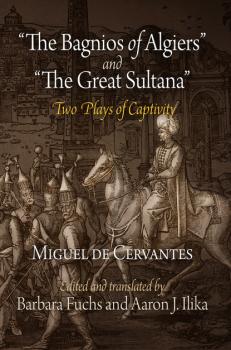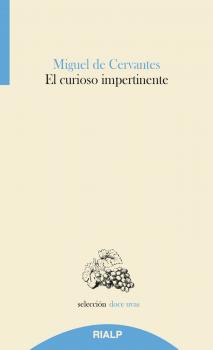ТОП просматриваемых книг сайта:
Miguel de Cervantes
Список книг автора Miguel de CervantesАннотация
Considered by many as the greatest of all Spanish authors, Miguel de Cervantes is most well-known of course for «Don Quixote,» a work of such literary impact that its historical importance cannot be understated. Unfortunately Cervantes' other works are often overlooked and characterized as inferior to his masterpiece. While his other writings never gained the popularity of «Don Quixote,» he did author several other works that are worthy of consideration. Amongst these are «The Voyage to Parnassus,» «The Siege of Numantia,» and «The Treaty of Algiers.» Considered by some as Cervantes best work next to «Don Quixote,» «The Voyage to Parnassus» is a comedic work first published in 1614 which satirizes his lyrical contemporaries. «The Siege of Numantia» is a dramatic tragedy composed around 1582 which follows the tradition of classic ancient Greek and Roman epics like Virgil's «Aeneid» and Lucan's «Pharsalia.» Another play, «The Treaty of Algiers,» deals with the life of Christian slaves in Algiers and is based on Cervantes' own experiences as a captive of the Moors.
Аннотация
What begins as the story of a middle-aged country gentleman absorbed with novels of chivalry deliberately evolves into a tale of purely imaginative knight-errantry in this highly influential work of the Spanish Golden Age. This first of modern novels was written in the experimental episodic form, allowing Don Quixote and his ‘squire’ Sancho Panza to go on quests that just as often as not land them in trouble or earn them the incredulity of those fully engaged in reality. While initially farcical, the novel slowly reveals a more philosophical thread exploring the theme of deception, all the while creating emotional and mental reversals in the two main figures that take them from tilting at windmills to fully comprehending reality. A work that frequently appears on lists in the highest echelon of published fiction, “Don Quixote” is a novel that has deeply influenced a host of notable writers and readers for hundreds of years. This edition follows the highly regarded translation by John Ormsby along with his complete original introduction.
Аннотация
The plot of this play revolves around a lovable trickster who aims to be helpful in order to be liked. His journey to find his identity ends with him finding his true vocation on the stage. Pedro, The Great Pretender opened at the Swan Theatre, Stratford-upon-Avon, in September 2004.
Аннотация
Considered by many as the greatest of all Spanish authors, Miguel de Cervantes is most well-known of course for «Don Quixote,» a work of such literary impact that its historical importance cannot be understated. Unfortunately Cervantes' other works are often overlooked and characterized as inferior to his masterpiece. While his other writings never gained the popularity of «Don Quixote,» he did author several other works that are worthy of consideration. Amongst these is «The Trials of Persiles and Sigismunda,» a romantic novel that Cervantes finished just three days before his death, and which was posthumously published in 1617. The work stands in contrast to «Don Quixote» as a work that embraces the fantastic rather than the ordinary. While the history of literature will likely continue to regard «Don Quixote» as Cervantes' greatest contribution he himself believed this work to have been his crowning achievement.
Аннотация
Best known today as the author of Don Quixote —one of the most beloved and widely read novels in the Western tradition—Miguel de Cervantes Saavedra (1547-1616) was a poet and a playwright as well. After some early successes on the Madrid stage in the 1580s, his theatrical career was interrupted by other literary efforts. Yet, eager to prove himself as a playwright, shortly before his death he published a collection of his later plays before they were ever performed. With their depiction of captives in North Africa and at the Ottoman court, two of these, «The Bagnios of Algiers» and «The Great Sultana,» draw heavily on Cervantes's own experiences as a captive, and echo important episodes in Don Quixote . They are set in a Mediterranean world where Spain and its Muslim neighbors clashed repeatedly while still remaining in close contact, with merchants, exiles, captives, soldiers, and renegades frequently crossing between the two sides. The plays provide revealing insights into Spain's complex perception of the world of Mediterranean Islam. Despite their considerable literary and historical interest, these two plays have never before been translated into English. This edition presents them along with an introductory essay that places them in the context of Cervantes's drama, the early modern stage, and the political and cultural relations between Christianity and Islam in the early modern period.
Аннотация
Аннотация
Информация о книге
Автор произведения Miguel de Cervantes
Жанр Языкознание
Серия Clásicos Hispánicos

